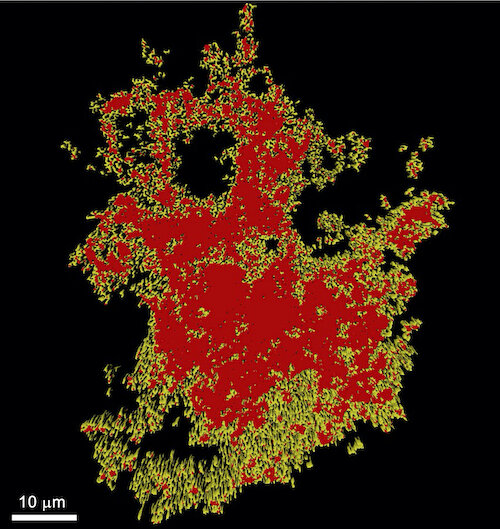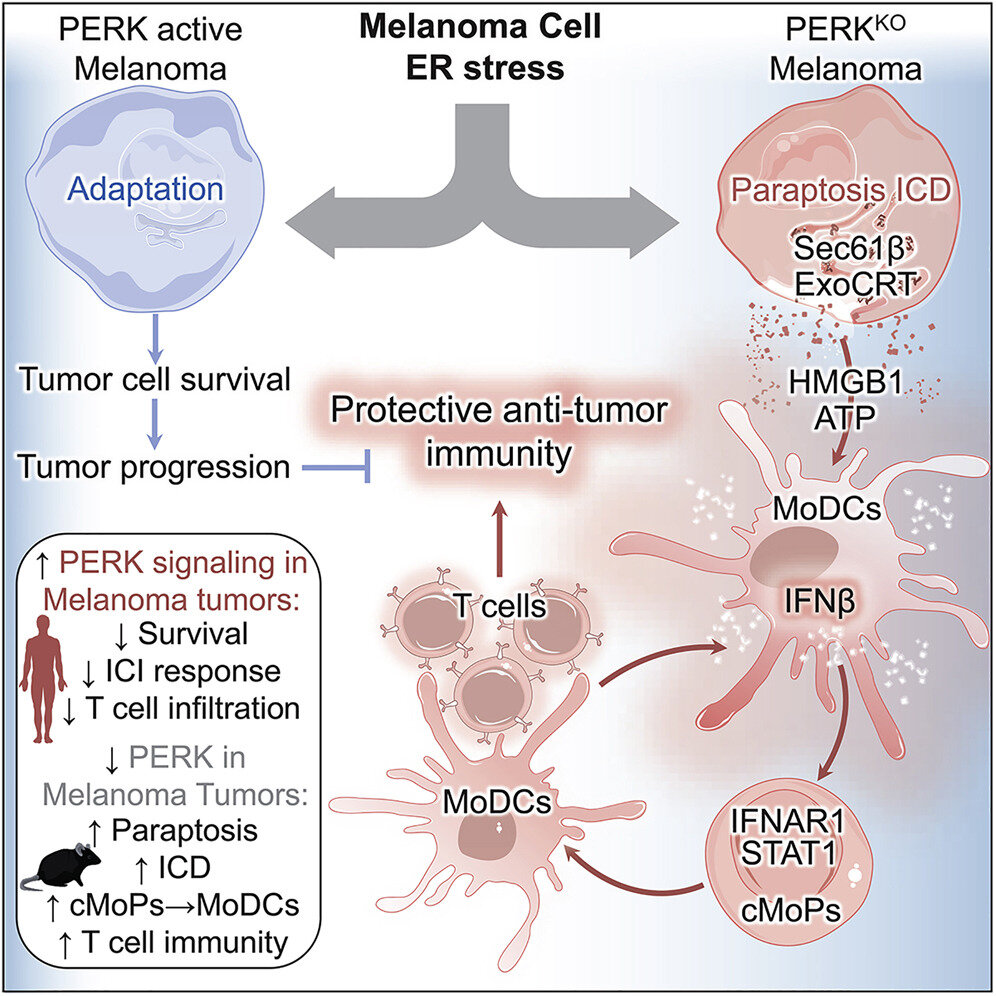A star-shaped cell known as an astrocyte. By: Anna Kruer, Medical University of South Carolina
Neurologists from the Medical University of South Carolina (MUSC) report in Achievements of science that the brain’s star-shaped cells, known as astrocytes, can “turn off” neurons involved in heroin relapse. Drug-related cues in the environment can increase drug-seeking cravings, leading to relapse. In this paper, a team led by Peter Kalivas, Ph.D., and Anna Kruer, Ph.D., both from the Department of Neuroscience, investigated how astrocytes interact with neurons and whether astrocytes play an important role in regulating the response to drug signals.
When we learn to ride a bicycle or solve a math problem, the messenger cells in our brain, known as neurons, create connections that allow them to communicate better so that we can more easily perform the same task next time. The same thing happens when we learn to associate pleasure with harmful substances, like drugs. Neurons send each other strong messages, motivating us to seek them again and again.
Communication between neurons is carried out by various cells, especially a group of stellate cells called astrocytes. Astrocytes surround our neurons and act as traffic lightregulating communication between cells, especially during habituation.
Another important player in addiction and relapse is the chemical messenger glutamate. Glutamate excites neurons and causes them to fire electrical signals communicate with each other. The Kalivas lab was instrumental in elucidating the importance of glutamate. Through decades of research, Kalivas developed the “glutamate hypothesis of addiction,” Kruer said.
According to this hypothesis, too much glutamate can cause our neurons to fire constantly in response to environmental cues associated with drug use. This constant firing puts the communication between cells into overdrive, encouraging drug-seeking behavior and relapse.
Kalivas and Kruer discovered that astrocytes can slow down overactive communication.
“Astrocytes are like a brake on a car, and you press it to stop the glutamate signal,” Kruer said.
But how exactly do they do it?
To answer this question, the researchers used a well-established model of heroin relapse. In the model, rats first learn to self-administer heroin by pressing a lever. After pressing a lever, they receive the drug along with light and sound cues, allowing the rats to associate the cues with the drug. The cue and the drug are then removed, simulating withdrawal. Finally, the animals regain access to the cue, and their lever pressing is an indicator of drug seeking and relapse.
Using this approach, Kruer and Kalivas found that astrocytes adapt in two ways to reduce drug-seeking during withdrawal. One family of astrocytes approaches neurons and directs glutamate away from the synapse, reducing communication between neurons. Another family increases expression of the glutamate transporter GLT-1, which removes excess glutamate. In both cases, astrocytes act as brakes on neuronal communication during withdrawal.
However, fewer astrocytes were available to perform this inhibitory function during the relapse phase and were located further away from neurons. Using a special chemical technique, Kruer and Kalivas were able to turn astrocytes on and off to change behavior, showing that these stellate cells play an important role.
“Essentially, when astrocytes surround neurons,” Kruer explained, “they take up glutamate and shut down that synapse,” she said. – However, when they pull away from the neurons, it’s like you’ve lost your brakes.
These findings may provide new insights into how to prevent relapse.
“Because astrocytes in the normal brain undergo two adaptations to suppress relapse, we believe they may be a valuable cellular target for the development of therapeutics targeting relapse in substance use disorder” Kruer said.
Previous clinical trials have shown that lowering glutamate alone is not enough to prevent relapse in humans. These results suggest the possibility that the combination regimen not only reduces glutamate levels, but also emphasizes the inhibitory effect of astrocytes, may be more successful and requires further study.
“Historically, neurons have received all the attention when it comes to behavioral pathologies,” Kruer said. “Our findings suggest that we need to take a more holistic view of the nervous system and take this into account cell types others besides neurons have the ability to influence behavior and may hold the key to treating relapse.”
To create the basis for new astrocyte-based therapies, the Kalivas lab is trying to identify potential gene targets.
“Many genes are expressed in astrocytes that are not expressed in other brain cells, including neurons,” Kalivas said. “Understanding which of these genes are critical for astrocyte regulation of relapse gives us insight into how to design drugs that will selectively increase astrocytes’ ability to inhibit relapse. This is an area of active research in our lab, and we have identified several astrocyte-selective gene products that can serve as targets for treatment substance use disorders.”
Anna Kruer and others. Plasticity of astrocyte subpopulations regulates heroin relapse, Achievements of science (2022). DOI: 10.1126/sciadv.abo7044
Provided
Medical University of South Carolina
Citation: Slowing Heroin Relapse (2022, October 5) Retrieved October 5, 2022, from https://medicalxpress.com/news/2022-10-heroin-relapse.html
This document is subject to copyright. Except in good faith for the purpose of private study or research, no part may be reproduced without written permission. The content is provided for informational purposes only.







